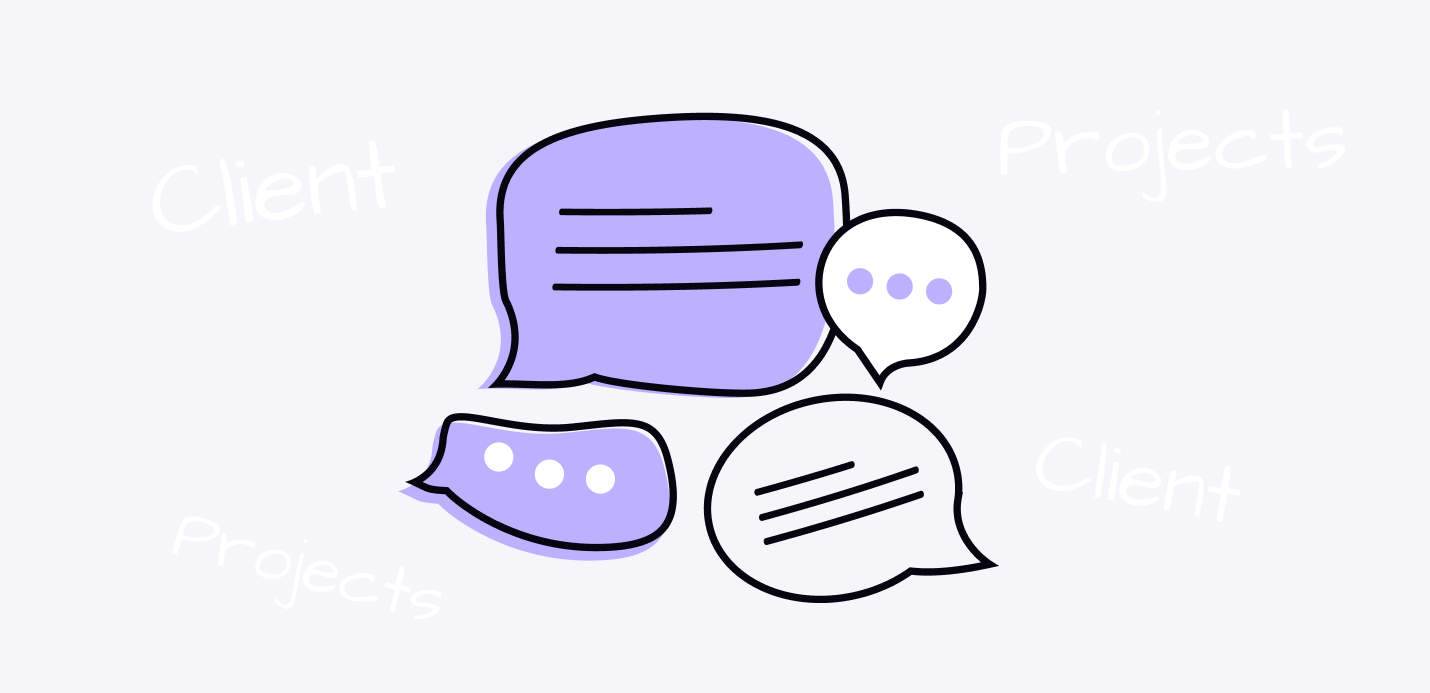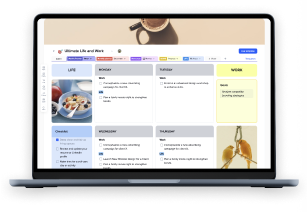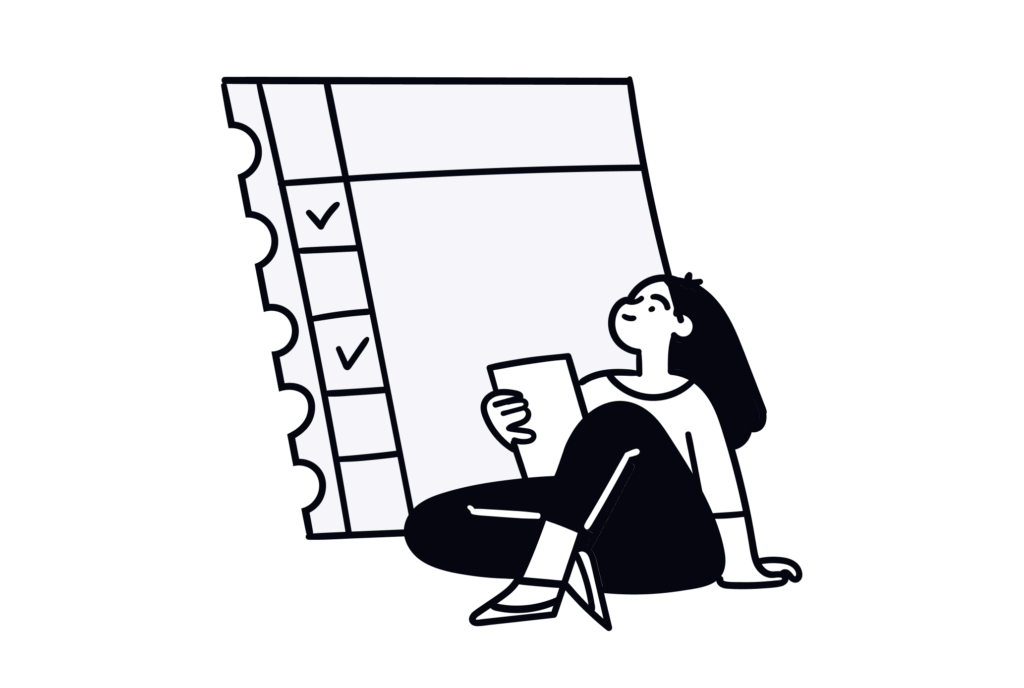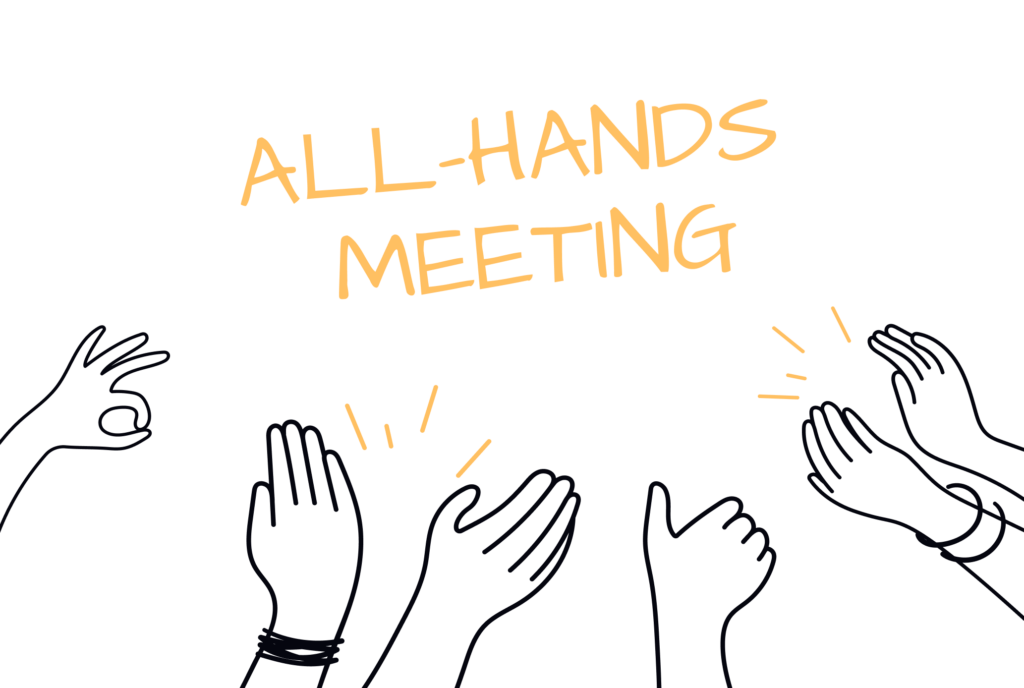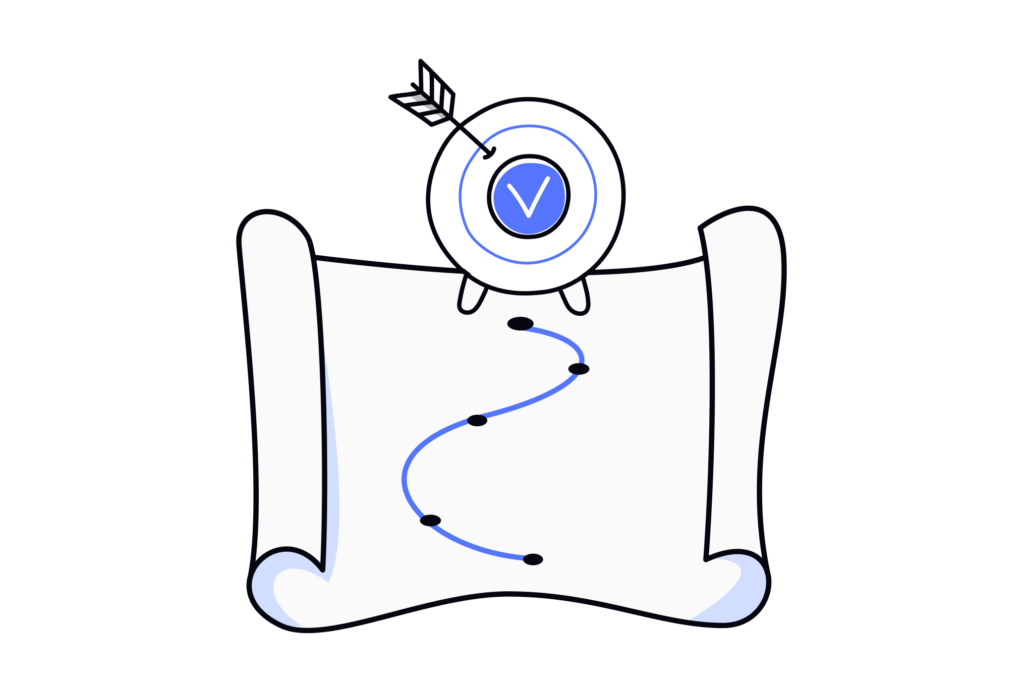Effective client communication is essential for successful delivery. It’s the first step when you start working with a new client, and it’s the first step when you work with someone you know. Communication skills can change everything, just as poor client communication can ruin everything. It can be the difference between a one-time project and a long-term partnership.
Often, it seems that anyone can communicate. Yes, this is true. However, not everyone can communicate effectively. There are tons of nuances, pitfalls, and life hacks to know when you want to get the maximum from communication with your client. You can spend hours and hours but might get nothing if you don’t know how to do it right.
In this blog post, we’re going to learn how to set up your client communication process, how to develop client communication skills and your own style, and how to use different tools. xTiles is your reliable guide when it comes to enhancing your skills.
Understanding the importance of effective client communication

Client communication refers to any communication that happens between a client and the service provider. Usually, all aspects of this communication depend on the service provider; that’s why it’s so important to know how to establish relationships based on trust to increase customer satisfaction.
Effective client communication goes beyond mere exchange of information; it’s about building strong client relationships, managing expectations, and fostering mutual respect. Good communication leads to client satisfaction, which in turn creates loyal customers and a thriving business.
Bad client communication can lead to misunderstandings, missed deadlines, and dissatisfied clients that, most likely, will never return to you and will never recommend you to others. To avoid this, companies should understand that communication is as important as hard skills and the ability to do the actual job your clients come for.
Companies should invest in communication skills training for their team, especially account managers who directly interface with clients. However, other team members who might communicate, even briefly, with clients should work on their skills as well.
How can companies ensure great communication from their side? They can encourage client feedback on communication processes to learn from their experience.
Pillars of effective communication with your clients
Effective client communication is not just a nice-to-have; it’s a must-have. Effective communication consists of many elements, some subtle and barely visible yet still important, others so huge they define the final product of your cooperation. It also has different communication channels that can have a huge impact on the results.
Let’s explore the five pillars that will help you have effective communication with your clients:

- Transparency – it means you openly share project progress, potential challenges, and even mistakes and issues.
- Empathy – it means putting yourself in your client’s shoes, recognizing their pressures, goals, and concerns.
- Self-awareness – it means understanding your own communication style, biases, and emotional triggers and how they can impact your client.
- Context – it means tailoring your message to the client’s industry, their role, the project phase, and even their current mood.
- Flexibility – it means being willing to adjust your approach based on client preferences and feedback.
Best practices for improving client communication with xTiles
To communicate effectively, businesses must leverage various tools and channels. The good news is that we have a solution that can replace these various tools and channels. xTiles offers a multi-purposeful digital workspace where you can update your client in real time, collect information, present first results, take notes, respond to their notes, etc.
Here is how traditional practices within xTiles can make client communication even more effective:
Choosing the right communication channels
Choosing your communication tools is one of the first steps of establishing your cooperation. It may define your communication for weeks or months to come. It may become your unique feature to win new clients.
Not all messengers suit all participants, especially if you work from different countries. Using email as a channel of written communication for detailed information that needs a paper trail is the most one-size-fits-all solution. However, it has its drawbacks. People tend to check their mail rarely than you may need it to get timely responses.
Then, you have phone calls for urgent matters or complex discussions. However, there remain critical or sensitive conversations. Do you need this many channels to communicate? Not necessarily as they might cause you trouble in remembering which stuff goes where.
You can opt for one project management tool with a wide range of features to deal with all of these. It is a perfect solution for long written updates, short notes, sharing sensitive data and more. And if you need to discuss something that can’t be shaped in text, chart, or table, you can always schedule a video call.
Having one channel of communication that serves multiple purposes and one back-up channel (like calls and meeting) to decide on important details and milestones eases your client’s life.
Improving active listening
This goes beyond just hearing words and it doesn’t stop the moment your meeting is over. It involves fully concentrating on what the client is saying, understanding their message, and responding thoughtfully. However, in the hustle of project management, crucial client insights can get lost in a sea of emails, calls, and meetings.
This is where xTiles shines. Every client request, concern, or clarification can be captured in a dedicated tile within your project workspace. These tiles become a living record of your active listening, ensuring no detail is overlooked. Team members can add notes, tag relevant stakeholders, and link to related tasks. When you revisit these tiles weeks later, you won’t find yourself in the embarrassing position of misunderstanding something the client explained clearly before.
When you practice active listening, you’re also asking dozens of questions to ensure you get everything right. Don’t be afraid to ask clarifying questions or paraphrase to ensure understanding. You will annoy your client even more if you return weeks afterward with something you didn’t get when they explained the first time.
Active listening should be united with empathy because communication with clients is communication with people, which means there will be misunderstandings, hardships, mistakes, etc. A service provider that tries to deliver exactly what they were asked for, tries to walk in their shoes. Account management is more than documentation and meetings. It’s also about understanding very different people in very different situations.
Setting clear expectations
Misunderstandings often stem from unclear expectations. Some companies are so desperate to win their clients’ appreciation that they promise to deliver the product much earlier than it’s possible or promise something that is impossible to achieve. This is a way to finish your cooperation earlier or after just one project.
From the outset, clearly communicate project scope, timelines, deliverables, and potential challenges. Be honest and open about what you expect and what you’re afraid of. You’re in this together.
You may use the xTiles Business Case Template to have all the data conveniently collected together to present it to your client. They can work on this document, leaving their corrections or comments so that you can polish your active plan.

Use simple language to explain complex concepts when talking with your client because they might feel uncomfortable asking questions. Regularly review and reaffirm these expectations if something changes. Your client deserves to know everything, even the slightest detail. Clear expectations prevent disappointments and keep everyone on the same page.
Providing regular updates
Everyone hates being left in the dark. That’s why it’s important to keep your clients informed in a timely manner, which means you update them as soon as you find something important yourself, even if it’s just to say, “We’re on track.”
However, such updates might take time you both don’t have. That’s why having one dedicated workspace where everything is collected saves time to you and your client and decreases the number of meetings or calls you need to discuss the project.
Tailoring your communication style
Every client is unique. Some prefer data-heavy reports, others want high-level summaries. Some appreciate a friendly, conversational tone, while others prefer strictly professional interactions. Key stakeholders are likely to shorten your meetings to get only the main points of the project’s progress, while the client’s team might want to discuss all the details.
If you work with one company for a long time, you may identify communication rules to automate the process. These rules may include information like your client’s preferences, your client’s perspective, how often they want to get updates, their preferred channels of communication, etc.
Providing regular follow-ups

Always do what you say you’ll do. If you promise to send information or schedule a call, make it happen. If you can’t make it happen, don’t be afraid to acknowledge this and explain the delay. This reliability shows professionalism and respect for your client’s time.
After meetings, send a summary of key points and action items. You may use the xTiles Meeting Minutes Template to present the information in a structured and easy-to-understand way.
Train your team
Excellent client communication should be a company-wide priority. It’s not the best strategy to rely solely on your account executives to handle all the conversations. Sometimes, your client may want to talk with the internal team, and they should understand basic communication principles, too.
Surely, you don’t have time to make everyone excel at account management, and you don’t need to, but enhancing their communication skills is an investment in better client relationships in all of your projects, current and future ones. Provide training in active listening, emotional intelligence, and conflict resolution. These three pillars of better client communication will greatly help the company and the team with dealing with their internal processes.
Also, you may create short directories your employees can use, depending on the situation or client, if an account manager isn’t involved. Building this compendium in xTiles allows people to have quick and easy access whenever they need something. Due to xTiles functionality, the system can be multi-level, greatly structured, and responsive.
Leveraging xTiles for enhanced client communication
Customer communication goes beyond verbal communication. Both sides need a reliable tool to convey information, manage expectations, and track progress. xTiles, with its flexibility and wide-ranging functionality, can become a hub for all client communications. It helps to balance client relationships by providing a platform that enables businesses to be included in the process, to have a perfect view of what is going on with their project.
Pre-designed templates save time on organizing and structuring data you need to present to your client. They also help to collect information from your clients before you can give your internal team a signal to start working.
Case study: improving client communication with xTiles
Communication is not only when you open your mouth and talk. You can answer many questions by creating a centralized hub where people can get the needed information in a few seconds.
xTiles allows teams transparent communication with their clients, managers, and between team members. For example, you can create a dynamic document with your content plan. Every piece of content will have its own tile (basic unit for organizing information) where you can assign people, set due dates, properties, and add any relevant information.
Calendar view allows you to see what and when should be done, and drag-and-drop allows you to move tasks easily. Table view allows you to see the general amount of content needed to be done and the status of each piece. Filters allow you to see only those tasks you want to check at the moment. For example, you can check only your tasks among all the tasks your team has.
Within one page, you can have subpages to keep your project structure optimized. Also, you can add a separate page or pages for your team members where they can track their tasks within the content plan.
xTiles templates are great client communication tools to enhance your interactions and cooperation. Otherwise, you’re going to have dozens of meetings, phone calls, emails, and notes all over your desk. Client communication software built-in into xTiles can save a lot of time you can dedicate to other tasks.
Project management software can keep everyone updated on tasks and timelines. The easiest way to keep your client and team apprised on the project’s execution is the xTiles Kanban Template. It’s hard to find anyone in corporate who wouldn’t know what a Kanban board is, so you won’t need to explain how to use it or how to “read” it. Other useful templates you may need, depending on the project specification and purpose, are Customer Persona (UI/UX), SWOT Analysis, Competitive Analysis, Website Brief, etc. You can find more on xTiles Gallery or xTiles Marketplace.
Helpful books to improve client communication
Here is a short list of books you can add to your reading list to enhance your communication skills at work:
- Think Faster, Talk Smarter: How to Speak Successfully When You’re Put on the Spot by Matt Abrahams
- Crucial Conversations: Tools for Talking When Stakes are High by Kerry Patterson, Stephen R. Covey, Joseph Grenny, Ron McMillan, Al Switzler
- Powerful Phrases for Dealing with Difficult People: Over 325 Ready-to-Use Words and Phrases for Working with Challenging Personalities by Renée Evenson
- Surrounded by Idiots by Thomas Erikson
- Effective Business Communication by Herta A. Murphy
Summing up
Effective communication goes beyond just what you say. It’s also about how you organize, share, and collaborate on information. That’s where xTiles comes in. As a powerful, flexible client communication tool, xTiles turns the often chaotic process of client communication into a streamlined, transparent journey.
With xTiles, you can create dynamic content plans where each piece of content has its own tile, complete with assignments, due dates, and all relevant information. The intuitive calendar and table views give both you and your clients a clear picture of what needs to be done and when. And with the ability to create subpages and separate pages for team members, project organization becomes a breeze.
Don’t let poor communication derail your client relationships. Take action today. Sign up for xTiles and experience how it can transform your client communication. With xTiles, you’re not just communicating; you’re building stronger, more transparent, and more successful client relationships.
Your clients will thank you. Start your journey to better client communication with xTiles now!

FAQ
What are the 5 pillars of client communication?
The five pillars of effective client communication are transparency (openly sharing project progress, challenges, and even mistakes), empathy (understanding the client’s pressures, goals, and concerns), self-awareness (recognizing your own communication style and biases), context (tailoring your message to the client’s industry, role, and current situation), and flexibility (adjusting your approach based on client preferences and feedback).
Why is communication important with a client?
Effective client communication is crucial because it builds strong relationships, manages expectations, and fosters mutual respect, which leads to client satisfaction and loyalty. Good communication prevents misunderstandings, missed deadlines, and dissatisfied clients, ensuring that clients not only return but also recommend your services to others.
How do you communicate with clients examples?
Examples of effective client communication include active listening during meetings to truly understand client needs, providing weekly email summaries or status calls for longer projects, using project management tools like xTiles Kanban Template for transparent task tracking, and sending meeting minutes after discussions. Also, tailoring your communication style (data-heavy or high-level, friendly or professional) to each client’s preferences is key.
How to start communication with a client?
tart by setting clear expectations. From the outset, clearly communicate project scope, timelines, deliverables, and potential challenges. Use simple language to explain complex concepts and tools like xTiles Business Case Template to present information clearly. Be honest and open about what you expect and what concerns you have, as this transparency lays the foundation for a trusting, collaborative relationship.

